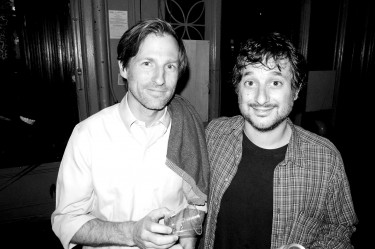Guest post by John Zhao
Riding skateboards, boxing with the locals and cooking up a storm were the fun and affordable things I grew up enjoying. Film school I avoided because it wasn’t as affordable and I was paranoid it would take out the fun. After I eventually experienced making a first feature, I couldn’t help realizing a list of pastimes that seemed to inform me of how to go about being a first-time filmmaker. I’m sharing this list from my journal and hope to hear what other filmmakers do in between the cuts.
1. SKATEBOARDING (AND FILMMAKING)
 Former Skaters Spike and Harmony
Former Skaters Spike and Harmony
That public location essential to your performance will try to kick you out. Have a getaway plan or a good lie.
There’s a lot of fun to be had even if your wallet’s near empty. The world is your playground.
Skate videos are absent of narrative and plot. They’re a cornucopia of rhythms, textures, music, and poetry that can keep me intrigued for hours. How can a feature film do the same?
A general disrespect for money and authority is healthy.
Enjoy feeling pain over and over again. It can take a dozen drafts to find your film’s soul and a twenty takes to nail your best move. See failure as slapstick, not sad.
Skateboarders bail and crash the second they become self-conscious of where to land, or intellectualize their movements mid-air. Take a leap of faith when you’re “almost ready” and WILL IT into existence. Staying delusional like this while making films seems to work out.
Every skateboarder dances their own style. Finding your own style and voice, and being completely yourself can be a challenge. But you can make someone lonely in their world feel less lonely for being who they are. You can teach something new and push things forward.
It’s an athletic art form. Develop a great sense of space, timing and balance. Being physically fit is essential for the ride.


